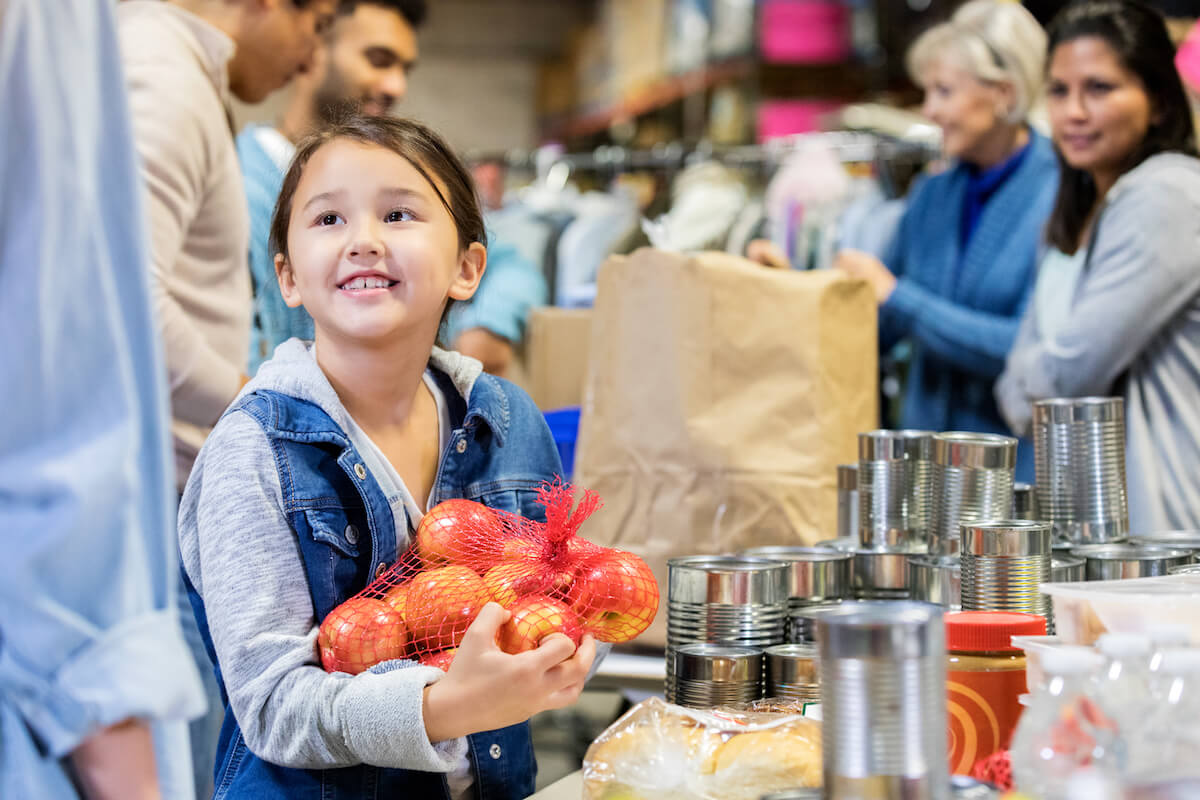At Mountain Kids, we believe a community is a place where people of all ages are supported. And it should be a place where everyone can find ways to give back.
Not only do we think building healthy communities is an “all hands on deck” situation, but we’ve seen the immense benefits that children of all ages reap through volunteering.
Teaching children to give back to the community has countless benefits for their mental and emotional development. As a result, it can pave the way to academic and inter-personal success.
The Perks of Kids Volunteering
Did you know that there are physical benefits to kids dipping their toes into volunteering?
Thanks to its ability to help them lead less sedentary lifestyles and improve their moods, volunteering comes with many health benefits, including:
- A longer lifespan
- Reduced risk of Alzheimer’s
- Reduced risk of obesity
- Improved self-care techniques
Career-wise, volunteering at any age helps children build the work ethic and skills needed for any job they might have in the future.
It also helps them build credentials that can pay off when it comes time to apply to the college of their dreams.
The Benefits of Volunteering for Elementary Schoolers
Elementary schoolers are learning a lot more in life than how to spell and add. They’re also experiencing immense amounts of brain development in other ways. They’re beginning to learn crucial life skills, like developing healthy friendships.
Volunteering can help elementary age kids develop all sorts of important life skills, including:
- Impulse control
- Being able to express needs and opinions
- Negotiation skills
- Sense of identity and self esteem
- Ethics
- Empathy
- Coping mechanisms
- The ability to set boundaries
- Establish independence
This age is an important time for character development. Here are some of the ways that volunteering helps school age children develop these social-emotional skills:
1. Volunteering encourages cooperation
Most volunteer experiences for elementary schoolers will be in settings where they’ll need to work on a team, often with people other than their typical peers.
They’ll learn what it’s like to share a common goal with others, and how to work together and compromise in order to achieve that goal.
2. Volunteering helps build empathy
To teach our kiddos compassion, it’s important to put them in scenarios in which they hear stories from people who come from different backgrounds.
Through acts of service for those in need and working alongside people of different ages and lifestyles, your children will build a deeper sense of empathy. These connections might even be what motivates your children to spring into action in the future!
3. Volunteering helps spark interests and passions
Throughout elementary school, our children learn what sparks their interest and why, which can serve as a window to their sense of identity.
When volunteering, children are exposed to new occupations and skills they don’t get to see during their typical school-home routine. This can help them find new hobbies.
Where to Volunteer with Young Children
- Habitat for Humanity is an organization with a mission to build homes for families in need. They take volunteers of all ages. Kids aged 14 and under get assigned fun skill-building tasks such as making and serving snacks to volunteers, organizing tool drives, and building planters.
- Bessie’s Hope pairs volunteers of all ages with assisted living and nursing home patients. You and your child can make a new friend and learn a few things while you’re at it!
- Colorado State Parks are always looking for volunteers of all ages to help keep the parks clean and safe. Connect with nature while making a difference!
The Benefits of Volunteering for Middle Schoolers
As our children reach middle school, they continue to develop their interpersonal and self-regulation skills. But now, there’s an even bigger emphasis on both personal identity and friends.
In middle school, our kids begin to really expand their horizons while navigating who they are and who they want to be surrounded by.
Most of our middle schoolers go through similar changes:
- Placing heavy importance on friends
- Seeking out specific peer groups to associate with
- Experiencing peer pressure
- Facing uncomfortable emotions such as anxiousness, loneliness, anger and sadness
Exposing your middle schooler to volunteer opportunities can help them learn how to face the ups and downs of adolescence while building healthy, inspired friendships.
Some of the ways volunteering helps middle schoolers include:
1. It builds self-esteem
Self-esteem can plummet during middle school, especially for young girls. It’s not just that pop culture and societal norms tend to send a message of inadequacy to them. It’s also because their brains develop in a way where their emotional intelligence can also lead to overthinking.
It’s critical in this stage to encourage your children to learn about and embrace their specific talents and skills.
When your middle schooler volunteers, they can get in touch with and learn new skills that they hadn’t noticed before. This enforces the idea they can make a difference in the world around them.
The feeling of having purpose helps foster a sense of independence. They’ll start to feel more capable of personal achievement at home, in school, and in their personal lives as they become motivated to push themselves a little further in all they do.
2. It helps build leadership skills
The confidence your middle schoolers gain while volunteering in combination with the ability to learn planning skills and real-life issues is the perfect recipe for a young leader.
Volunteering teaches important leadership skills learn such as:
Planning
- To reach any goal, you need a plan. Your kids will learn not only how to plan projects like meals and portions for homeless shelter volunteering, but how to plan to achieve an organizational mission.
Negotiation
- Another perk to sharing a common goal with a team is learning the ability to compromise with different kinds of people to achieve that goal.
Operations Management
- Witnessing a project from start to finish can help children learn the best processes for projects.
These leadership skills will serve them in future roles in both their personal and academic worlds. And these experiences can also help them abstain from peer pressure.
Youth who volunteer just one hour or more a week are 50% less likely to abuse alcohol or cigarettes.
3. It expands their worlds
In their search for identity, middle schoolers can oftentimes feel lonely or isolated, especially if they have a hard time finding others who share the same interests in their circle.
Volunteering unites like-minded individuals with similar interests. Meeting these people can help remind your middle schooler that there are plenty of people who care about the same things they do.
Where to Volunteer with Your Middle Schooler
- Boulder Shelter for the Homeless accepts volunteers age 12+ with an adult. You’ll be working with a team of other compassionate individuals in roles like kitchen assisting or dinner service.
- Children’s Hospital of Colorado hosts a junior volunteer program for youth ages 13-18. The program provides an opportunity for your preteen to participate in hospital operations and fundraising.
- Volunteers of America can connect you to a variety of opportunity for youth ages 11-17. Your child can choose anything from helping the homeless to making an elderly friend.
Kids who volunteer gain the opportunity to develop skills and build relationships that will serve them for the rest of their lives. There are plenty of options and ways to contribute to the community, so allow them to guide the process a bit and find something that sparks them.
Finally, it’s a great opportunity to add a new spin to family time. There’s always something new to learn about one another, and volunteering is a great way to do so!
Looking for more ways to aid in your child’s emotional development? It may be time to introduce them to the magic of dance »

